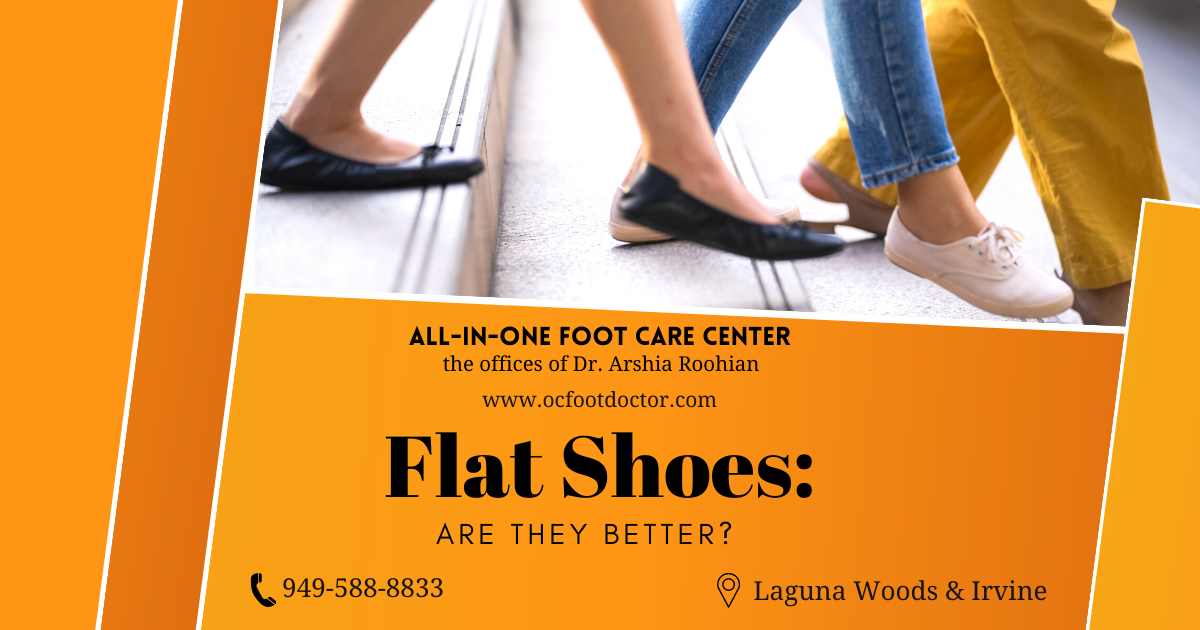Flat Shoes: Are They Better?

There are many problems that can arise from wearing the wrong type of shoes, and these can extend far beyond your feet. A lack of proper footwear can lead to problems with the back, hips, and knees.
In many cases, high heels are considered to be the culprit because they force the feet into an unnatural and unbalanced position. Compared to flat-soled shoes, we often think they are safer and more comfortable.
There is a middle ground between truth and fiction. However, the wrong kind of flat shoe can create just as many difficulties as high heels, so it's important to understand the differences and dangers of both.
Wearing high heels is stylish, but dangerous
All sorts of problems can arise from wearing high heels.
Problems with the feet and toes
Your entire weight is concentrated on the balls of your feet when you wear high heels. As a result, your toes and the front of your foot are put under enormous pressure and the padding on the sole thins out. Cushioning is significantly reduced as a result.
The front of the shoe also squashes your toes together. To mention a few, this can lead to calluses, bunions, hammertoes, and ingrown toenails.
Problems with the back, hips, and joints
You are forced into an unnatural stance when you wear high heels. In order to compensate, you lean back with your upper body and shift your lower body forward. As a result, your movement is affected. In addition to keeping you balanced and propelling you forward, you put additional stress on your ankles, knees, and hips.
Your bones are also subjected to extra wear and tear as a result. Due to the altered leg position, knee osteoarthritis is common among persistent high heel wearers because the tibia (shin bone) turns inwards and compresses the inner knee.
Are Flat Shoes the Answer?
Depending on the situation. Support is lacking in some flat shoes. The soles and heels of traditional court shoes, casual shoes, flip-flops, and ballet shoes are minimally shock-absorbing (often none at all). You are also at risk of blisters, corns, and bunions if there are no buckles, laces, or straps.
Tendonitis of the Achilles
A flat foot will force the Achilles tendon (at the back of your lower leg) to stretch without arch support. Located between your heel bone and calf muscles, this tendon is painful and stiff due to extra pressure. There is even a possibility that it may rupture.
Fasciitis of the plantars
In addition to the arch, the plantar fascia, a band of tissue running from the heel bone to the metatarsal bone (toe), can also be affected by arch problems. The plantar fascia wasn't designed to take the full impact of your stride without cushioning. Inflammation, pain, and stiffness result, particularly in the heels.
Problems with the joints, posture, and spine
Flat shoes can also cause damage to joints and tissues, similar to high heels. Keeping balance and walking can lead to back, hip, and knee problems as a result of subconsciously adjusting your movements.
What are the best shoes for you?
It is ideal to have arch and ankle support, a wider toe box, and a reinforced heel cup. An ideal shoe would be a good quality trainer or smart shoe with a wedge or solid heel at the bottom. If you're going to the beach or to special occasions, you can wear higher heels or flip-flops, but try not to wear them too often.
Unsure what’s right for you? Talk to our experienced podiatrists Dr. Arshia Roohian today. You can contact our office at 949-588-8833, or visit our website at https://www.ocfootdoctor.com. Our offices are located in Laguna Hills, Irvine, Mission Viejo, Aliso Viejo, Lake Forest, Foothill Ranch, and Costa Mesa.
📲 949-588-8833
🏢 24331 El Toro Rd, Suite 370 Laguna Woods CA 92637
🌐 https://www.ocfootdoctor.com/


